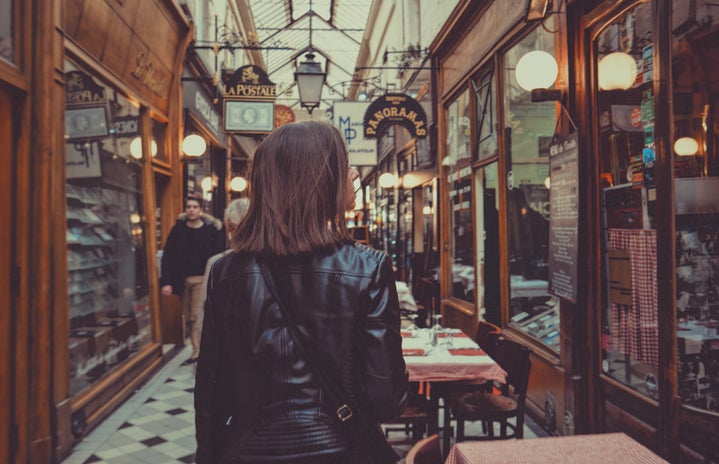It’s no secret anymore that fast fashion brands (think Forever 21, H&M, Zara, Dolls Kill) are major contributors to climate change and are harming our planet day by day. Not to mention, the harsh conditions in which their laborers are forced to work under, and the overall low quality of their products. People everywhere are becoming increasingly aware of this fact, yet these brands still manage to persist. I myself have been guilty of supporting these kinds of stores, but I’m trying to make a change for myself. The typical Instagram influencer will tell you, “stop supporting fast fashion, shop sustainably!” while flashing their $200 Reformation summer dress and $180 Doc Martens. While that’s all fine and well, and its commendable that young people are raising awareness on these kind of issues, what are those of us without such an expensive wallet to do? What are our options? Many will write sustainable shopping off as “unrealistic” for all, or out of their budget, but that doesn’t have to be the case. Maybe you can’t afford Reformation, Rag & Bone, or any of the pricier sustainable brands — but there are plenty more options out there.
I know the average college student doesn’t have $60 to drop on a plain white tee, so staying away from those so-called, but not really, “affordable” brands like Everlane, Alternative Apparel, or Pact (all ranging from, on average, $40-$100 for a single piece!) let’s take a look at what else is available.
Buying Second Hand (Thrifting):
Now I know, thrifting isn’t exactly some genius, fresh idea, but it really is a great, sustainable choice. Fast fashion has taught us to buy the trendiest new pieces every few months and wastefully dispose of “last-season” items regularly, leaving an excess of clothes that aren’t being worn. Thrifting is a great way to remedy this. Places like Goodwill are a particularly good option if you’re on a tighter budget– and don’t be fooled, you can find some amazing pieces here for dirt cheap if you’re willing to dig! However, if you don’t happen to have the time to search through racks upon racks at thrift stores, or maybe you don’t live by any quality stores, there’s still a simple solution– try online!
Apps like Depop, Poshmark, and even Ebay are all the rage for clothing right now, providing lots of vintage and modern pieces that are to die for. Depop is especially great for scoring 70s, 80s, 90s, and early 00s staples, or even bigger, costlier brands like Unif and Lazy Oaf at a more affordable price. My personal favorite, however, would be the app ThredUp. An own brand in itself, ThredUp offers thousands of extremely affordable, quality clothing items for people of all ages. Some vintage resellers can rack up their prices, but with apps like Poshmark or ThredUp I’ve purchased plenty of pieces, vintage and modern alike, for under $15 each. If you’ve got a thing for retro style, these apps are probably your best bet.
Another excellent online option would be to search for resale shops on Instagram! If you’re looking for a more chic 60s inspired preppy look, or that reemerging trendy Y2K look, this may be for you! Check out pages like @jessavintage, @stellarvintique, @deuxbirds, @fancythriftt, or @spacemineshop to name a few. Some of their pieces can be on the pricier side, but compared to luxury brands (like the aforementioned Reformation), they’re still far less expensive and far more unique and eye-catching! If you want to add an extra something to your style and stand out, give these a try.
Give handmade garments a chance! Apps like Esty are well-known for offering clothing and accessories made by sellers, and you can often request custom-made or altered pieces for relatively cheap. Don’t be afraid to check out local boutiques or independent shops either– these are just another way to get much more original pieces than something you’d find while scrolling through the clearance section of Forever 21. Trust me.
At the end of the day, I think we can all agree that fast fashion is a serious problem. I’m not here to shame anyone, and I certainly know that fast fashion is still by far the most inexpensive and accessible means of buying clothes for many– but even making the choice to occasionally shop sustainably can help make a difference. Hopefully this will prove not to be a fad but rather a permanent movement towards more ethical fashion for our generation.



